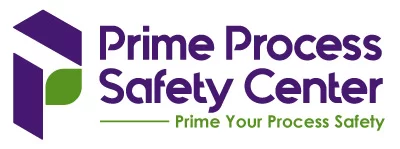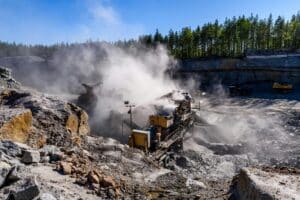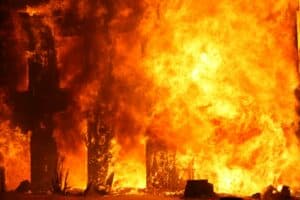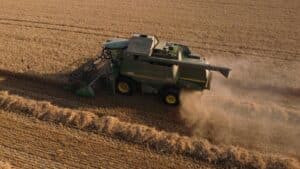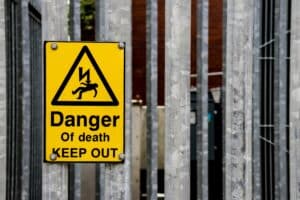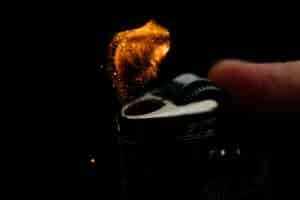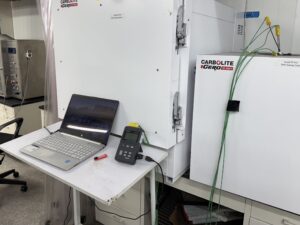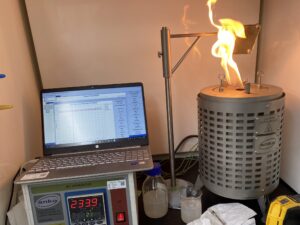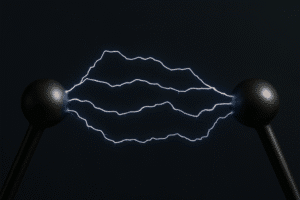We also offer
Combustible Dust Testing: Key Explosion Parameters
Understanding combustible dust explosion parameters is critical for assessing and mitigating explosion hazards in industrial environments. At Prime Process Safety Center, we provide comprehensive combustible dust testing services to determine dust explosibility characteristics and guide safer facility design and operation.
Below are the essential tests used to evaluate combustible dust behavior and explosion potential.
Dust Explosion Severity (Kst)
The dust explosion severity test determines the degree of explosibility of a dust cloud. It is characterized by three key parameters:
-
Maximum explosion pressure (Pmax): The highest pressure reached during a dust explosion.
-
Maximum rate of pressure rise ((dP/dt)max): The steepest rate at which pressure increases during the explosion event.
-
Explosibility index (Kst): A derived value that classifies the dust’s explosion severity.
Kst indicates the rate of pressure increase during a dust explosion, helping to categorize dust as weak, strong, or very strong in explosibility. Pmax provides insight into the maximum achievable pressure generated during a dust explosion event.
These parameters are essential for designing explosion protection systems such as vents, suppression devices, and containment systems.
Minimum Explosible Concentration (MEC)
The Minimum Explosible Concentration (MEC) test determines the lowest concentration of a dust-air mixture that can propagate a deflagration in a closed system, such as a 20-L Sphere.
It represents the lower limit at which a dust-air mixture becomes capable of sustaining combustion or explosion if ignited. The MEC helps define safe operating conditions by indicating how much dust can safely accumulate in air before it becomes explosible.
Understanding the MEC is essential for developing effective housekeeping, ventilation, and dust collection strategies to prevent explosive dust concentrations.
Limiting Oxygen Concentration (LOC)
The Limiting Oxygen Concentration (LOC) is the minimum oxygen level at which a dust explosion or combustion involving combustible dust cannot be sustained, even in the presence of an ignition source.
This test determines the oxygen concentration below which the dust-air mixture is unable to support combustion or explosion. LOC testing is particularly useful for designing inerting systems, which reduce oxygen levels in process equipment or storage areas to prevent ignition.
Maintaining oxygen below the LOC provides a proven layer of protection against dust explosions in processes involving combustible materials.
Minimum Ignition Energy (MIE)
The Minimum Ignition Energy (MIE) test determines the lowest electrical energy capable of igniting a dust cloud at its most easily ignitable concentration in air.
A capacitive spark generator is used to simulate ignition sources commonly found in industrial environments—such as propagating brush discharges, mechanical friction, or electrical sparks.
Knowing the MIE of a dust helps assess the risk of ignition from static discharge and guides the design of grounding, bonding, and process control measures to minimize ignition hazards.
Minimum Autoignition Temperature (MAIT)
The Minimum Autoignition Temperature (MAIT) of a dust cloud is a key parameter for assessing the potential for spontaneous ignition in environments where combustible dust particles are suspended in air.
MAIT represents the lowest temperature at which a dust-air mixture can ignite spontaneously without any external ignition source.
This test is used to establish the maximum allowable operating temperature for electrical and non-electrical equipment located in areas where combustible dust is present. Identifying the MAIT ensures that surface temperatures of process equipment remain below ignition thresholds.
Layer Ignition Temperature (LIT)
The Layer Ignition Temperature (LIT), also known as the Minimum Ignition Temperature of a Dust Layer, is the lowest temperature at which a settled layer of dust can autoignite on a hot surface.
This test provides vital data for determining the maximum safe operating temperature for equipment installed in dusty environments.
LIT testing helps identify ignition risks from hot surfaces, such as motor housings, lighting fixtures, or process equipment, where dust layers can accumulate over time.
Why Choose Prime Process Safety Center
At Prime Process Safety Center, we specialize in combustible dust testing and analysis to help facilities identify, quantify, and mitigate explosion hazards. Our experts use standardized methods such as ASTM E1226, E1515, and E2931 to deliver accurate, defensible results.
Our Expertise Includes:
-
Comprehensive testing of combustible dust properties, including Kst, Pmax, MEC, LOC, MIE, MAIT, and LIT
- As an ISO/IEC 17025:2017 accredited laboratory, we follow rigorous quality and competency requirements for every test we perform
-
Guidance for Dust Hazard Analysis (DHA) and explosion prevention system design
-
Support for regulatory compliance with NFPA 652, 654, and OSHA standards
-
Customized testing programs based on your process materials and safety needs
Partnering with Prime Process Safety Center ensures your facility’s combustible dust risks are scientifically understood, documented, and effectively controlled.

